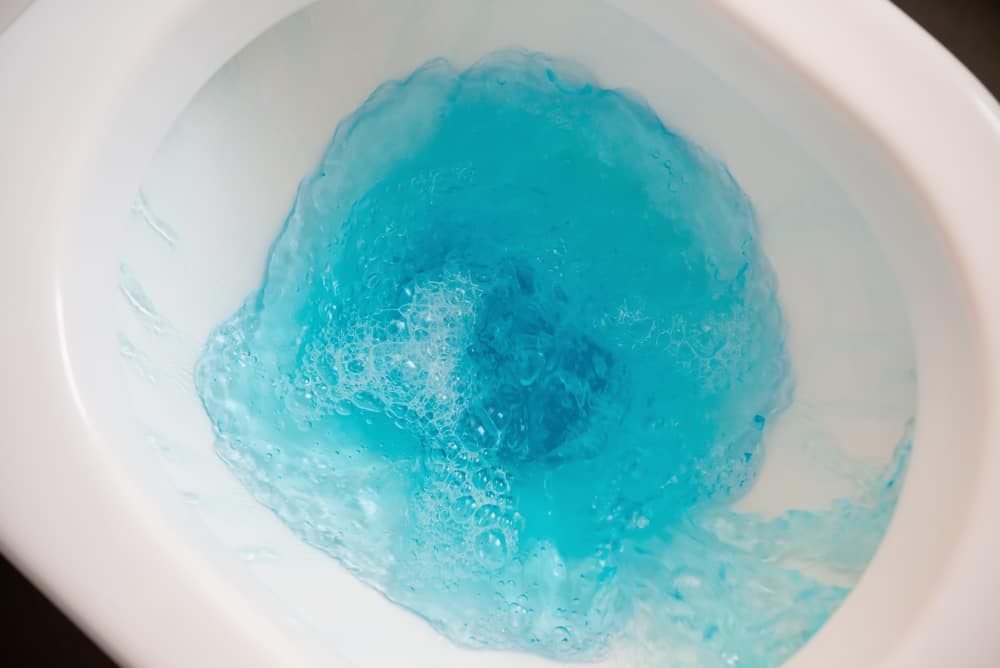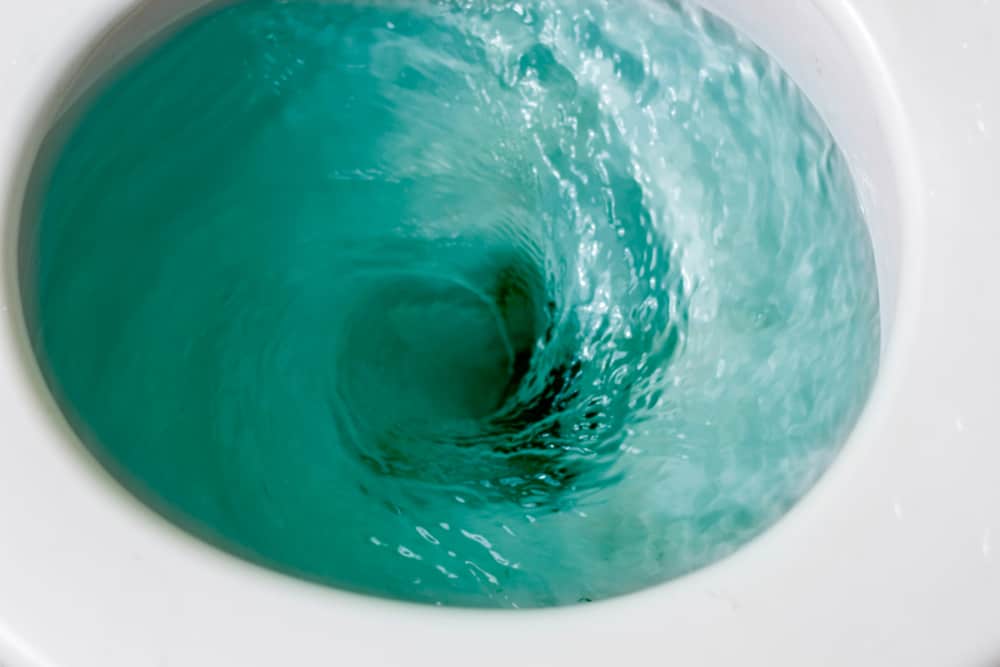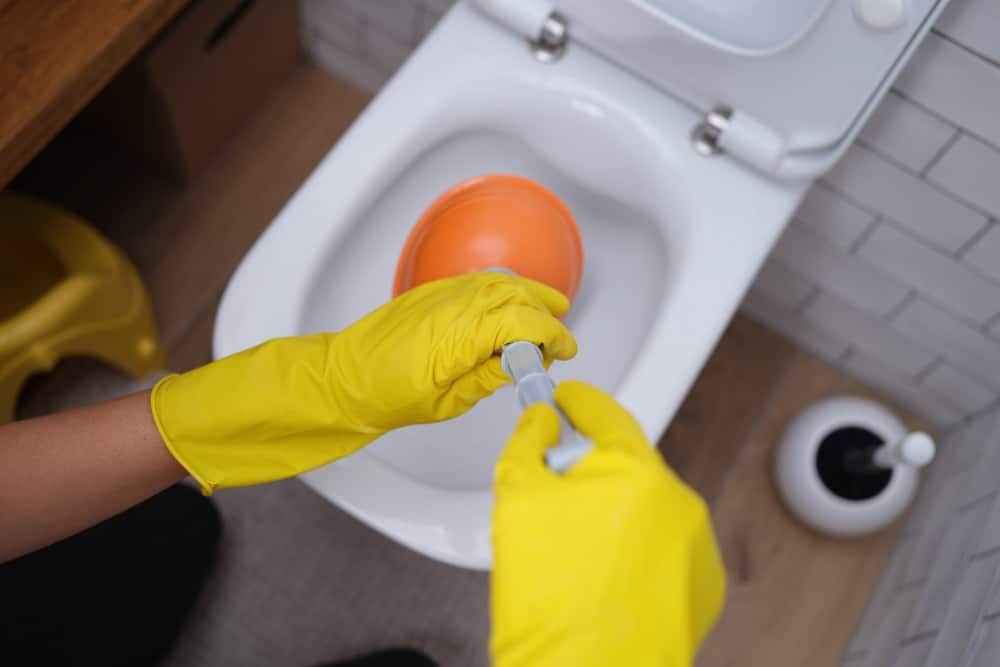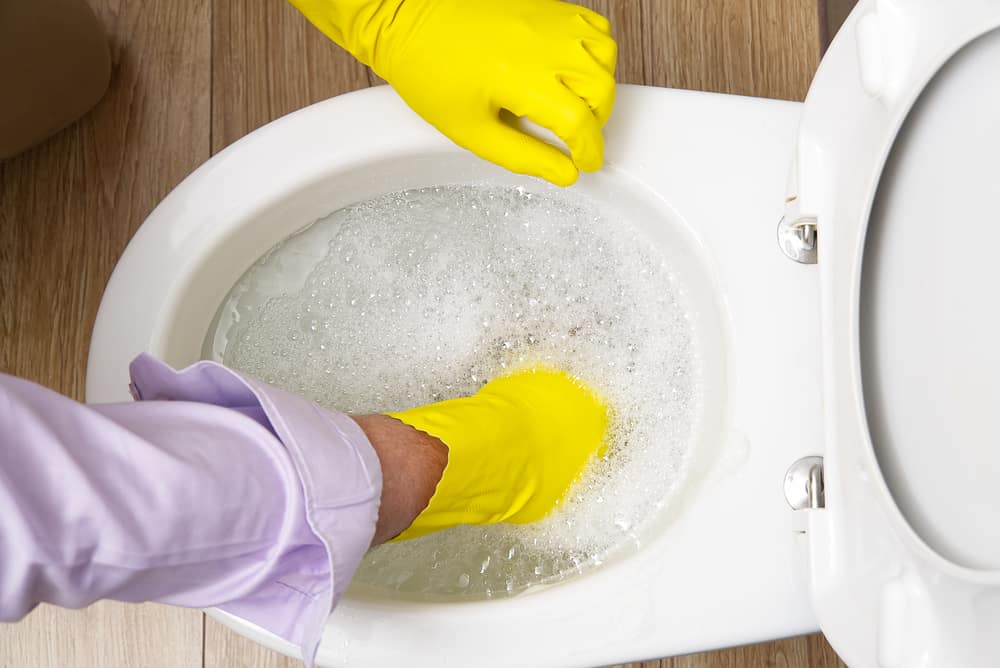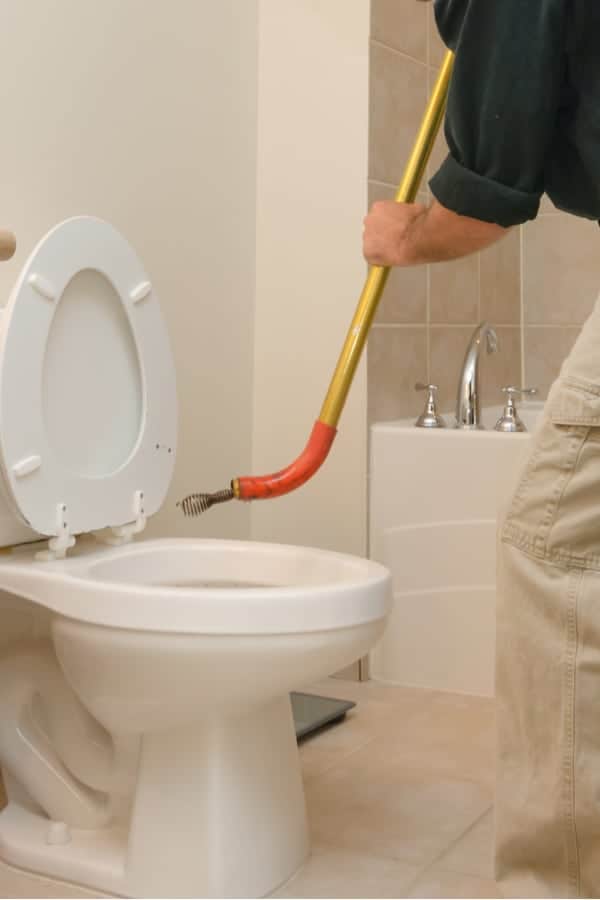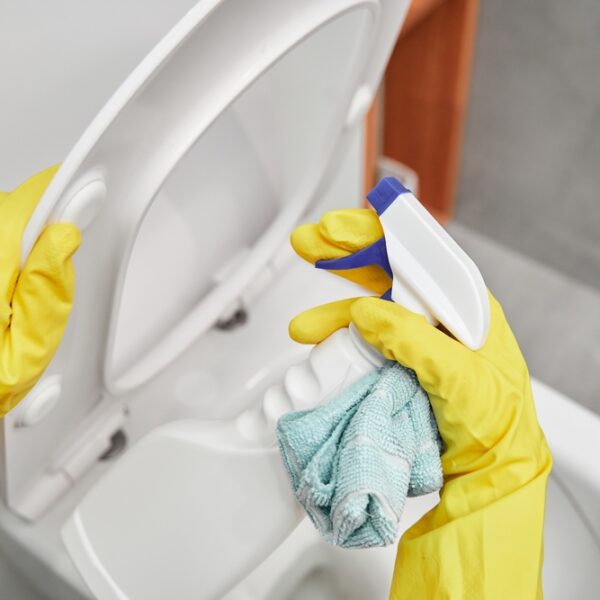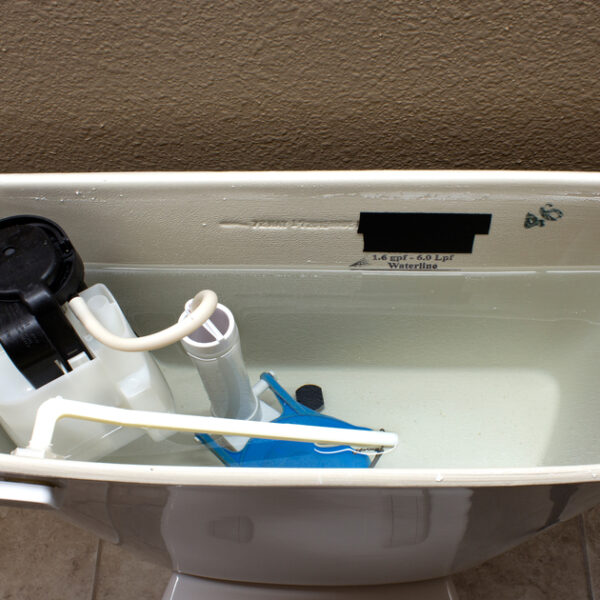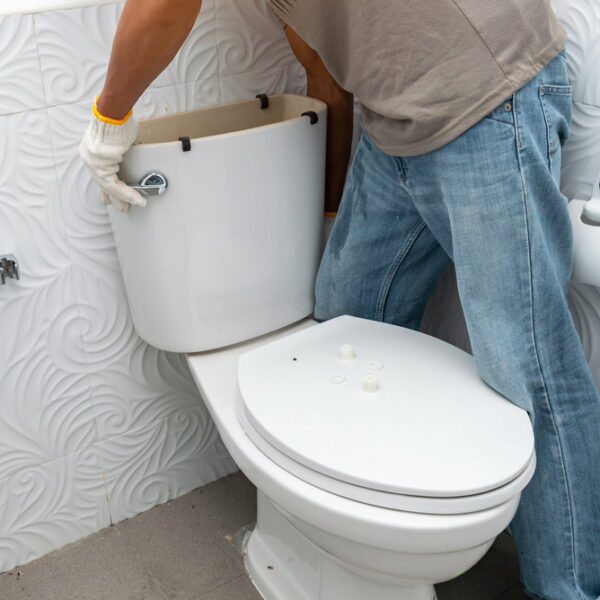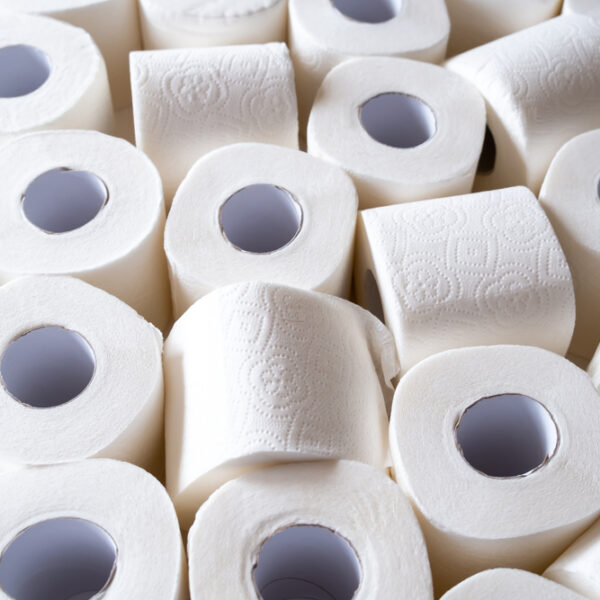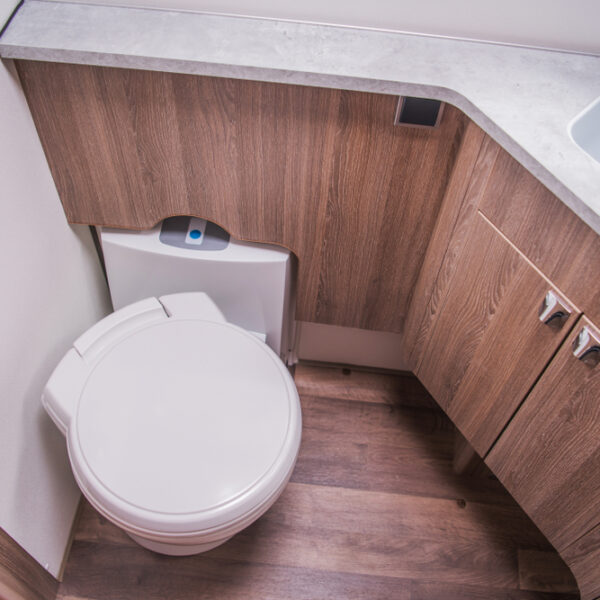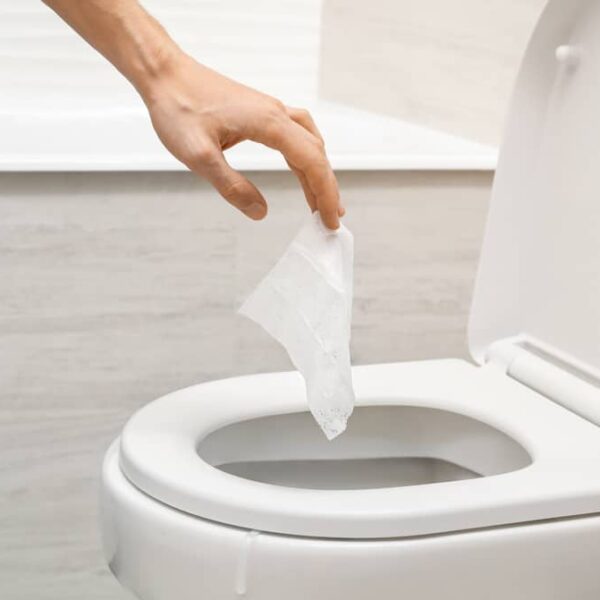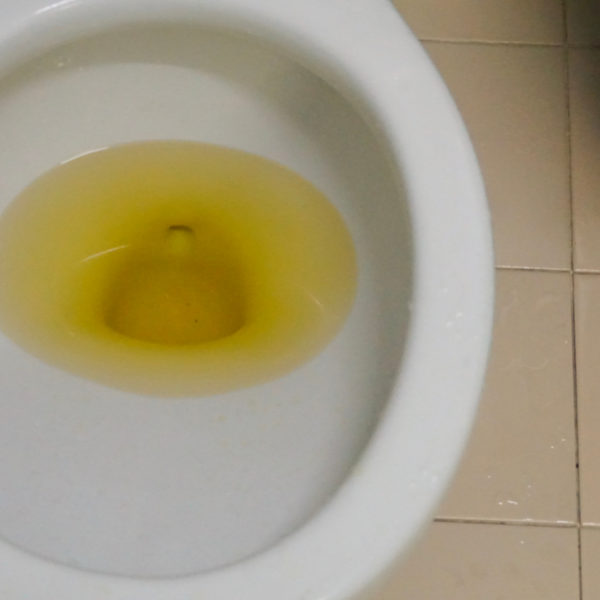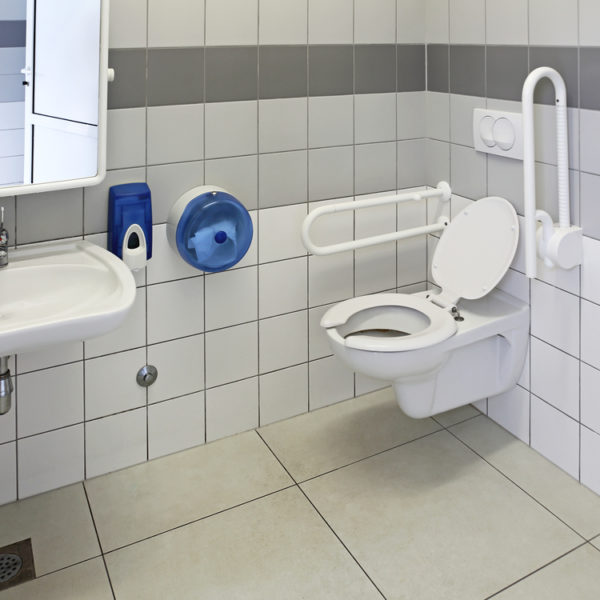If you flush your toilet and see the water level rising above where it should usually be, it’s a sign that something is wrong somewhere in the plumbing system. And if it continues to rise, it can become quite alarming since you risk flooding your bathroom floor with dirty water.
There are a couple of common reasons for toilet water to behave in this way, and thankfully, they’re usually quite easy to deal with. So to help you understand what you’re facing, in this post we talk about what to do when the toilet water rises too high when flushed.
Toilet water rising when flushing? How do toilets work?
Before we talk about reasons for the water rising too high when you flush your toilet, we need to take a step back and think about how toilets work – because this will help us understand more about what’s going on with the water level.
In the US, most residential toilets are based on a siphon system.
When you look into a toilet, you see a bowl filled with water, but behind the toilet, there is a pipe in the shape of an exaggerated “S” called an S-trap.
The top of the S-trap is higher than the water in the bowl, so the water in the bowl sits at the same level in the part that you can see and in the part of the “S” that you can’t see.
However, when you flush the toilet, the water flows over the top of the “S” and down the pipe, which activates the siphonic action, sucking all the water, along with any waste, down the pipe and into the sewer.
Then, when all the water in your toilet’s cistern has been emptied into the bowl and the water no longer flows over the top of the “S”, air enters into the system, stopping the siphoning effect.
After this, the water left in the bowl finds its level again with the water on the other side of the “S”, which is why the water in your bowl should always sit at the same level.
So now we know how toilets should work, let’s have a look at what can go wrong to change the level of the water in the bowl.
Possible causes for Toilet Water Rises Too High When Flushed
If you flush your toilet and you notice the water rising higher than normal – and even threatening to overflow from the rim of the toilet – there are two main possible reasons.
The first is that the toilet has a clog, and the second is that the air vent is blocked – so now let’s look at these in turn.
1. Toilet is blocked
The number one cause for the water to rise too high when you flush the toilet is because there is a blockage somewhere in the pipe.
Usually, toilets can deal with regular toilet paper being thrown into them, but if you throw other items into the toilet – such as sanitary towels, baby wipes or other items that aren’t designed to be flushed down the toilet – they can get stuck.
Then, once a blockage starts to form, even regular toilet paper can also become entangled, making things worse.
If this happens, at first, you will notice that when you flush the toilet, the water rises a little higher than before and takes a short amount of time to go back to its normal level.
After this, the problem will gradually become worse, with the water rising higher and taking even longer to go back down to the correct level – and eventually, the bowl will fill up and the water won’t drain away at all.
At this point, if you flush the toilet again, you risk the water rising up above the level of the toilet bowl and flowing out onto your floor.
2. Air vent is blocked
Another possibility, although less likely, is that the air vent on your plumbing system is blocked.
Since the pipes in your plumbing system are filled with water, air is also required in the system to allow the water to flow.
Think about filling a straw with water and holding your finger over one end – if your finger covers the hole at one end of the straw, the water won’t flow out of the straw until you remove your finger, even if you hold it vertically.
Essentially, your plumbing system is just a larger version of this, and without air being allowed into the system, the water in your pipes will remain stuck where it is.
For this reason, home plumbing systems incorporate air vents – also known as plumbing vents or vent stacks – to introduce air to the system.
However, if your vent becomes blocked, it prevents the water from flowing, which in turn causes blockages and sometimes causes water to back up through pipes.
Usually when this happens, you will notice the problem throughout the whole system, so if only one toilet is experiencing problems, this is unlikely to be the cause.
However, if your whole plumbing system appears to be blocked up, it could be due to a clogged air vent.
3. Is it related to the cistern?
Sometimes, if you search online, you may find sites telling you that toilet water rising too high can also be due to a problem in the cistern (also known as the water tank).
You may read that the problem is due to a faulty flush valve seal, the toilet flapper, the flapper chain or the float ball. However, although these components may develop problems or even fail, there is no way they can be responsible for the water rising too high in your toilet bowl.
We have seen sites claiming that faulty flush valve seals or flappers can cause too much water to pour into the toilet or that they can cause constant dribbles of water to flow into the bowl, supposedly causing the water to rise too high.
However, as we have seen, the S-trap behind the toilet bowl ensures that the water always remains at a constant level, and if you pour extra water into the toilet, the excess will just escape down the drain.
The same is true if you pour a large bucket of water into your toilet – all the excess water will quickly disappear down the drain, and the water in your toilet bowl will always remain at the same level.
What all this means is that while your toilet cistern can certainly develop problems, when it comes to water rising too high, the cistern is never to blame.
Water rising too high in the toilet is always due to something that’s going on “below” the toilet rather than “above” it.
4. Check the tank all the same
Having said that, a problem in the cistern that results in not enough water being sent to the bowl for a proper flush or a slow flushing toilet could be to blame for the blockage occurring in the first place – since whatever you flush down the toilet is not being cleared properly.
This means after you resolve the blockage, you should also check that the toilet tank is functioning correctly too and that the tank water level is ok – and make an adjustment if necessary – or you risk another blockage forming later.
How to Fix Water Rising Too High When Flushed?
So now we’ve seen what can – and what can’t – cause the toilet water to rise too high, we can move on to looking at some of the ways you can fix it.
Method 1 – Plunger
If you notice your toilet is draining slowly, it probably means a blockage is forming somewhere down the waste pipe, so it’s best to take action as early as possible so it doesn’t become worse and harder to shift.
The first thing to try is to unblock the toilet using a plunger.
Plungers work by creating pressure and forcing water down into the toilet and then sucking it back up. The idea is that the water pressure will push and pull on whatever it is that’s blocking your toilet, hopefully dislodging it.
Simply take the plunger and put the suction cup end into the toilet bowl. Place it over the hole in the bottom of the toilet bowl and then push it down and pull it up a few times with as much force as you can with each plunge.
After a few goes, you may feel it getting easier to push and pull, and you may also find that some debris such as old toilet paper is sucked up into the bowl. This is a good sign that it’s working.
If lots of toilet paper and other debris starts getting sucked up, it’s best to fish it all out and put it into a plastic bag rather than flushing it back down the toilet drain again – or it will just re-block the toilet.
After a few goes – and once you’ve removed any debris that was bought back up – pull the flush handle and see if the water drains away as it should. If it does, you have successfully removed the blockage.
Tip: Plungers are incredibly useful items to own, and every house should have one. You can pick them up at any hardware store, and they are inexpensive tools, so if you don’t have one, it’s a good idea to buy one – because you are almost sure to need to use it sooner or later.
Method 2 – Use your hands
Another possibility is that the blockage is close to the toilet bowl somewhere in the trap, in which case, you may be able to reach it with your hands.
Start by removing any water from the toilet bowl – you can do this by scooping most of it out with an old cup and then mopping up the last remnants with an old towel.
Next, while wearing a pair of thick rubber gloves, push your hand slowly into the toilet and as far down the bend as you can. If you are lucky, you will be able to feel the blockage, and then all you need to do is pull it out manually.
Once you’ve pulled out anything that was clogging the S-trap, give the toilet a flush and see if the problem has been resolved.
Tip: Be careful when you are doing this because you never know what will be caught in the blockage. Of course, nobody should be flushing sharp objects down the toilet, but since you don’t know what’s there, it’s wise to exercise caution.
Method 3 – Plumber’s snake
If you can’t shift the blockage with a plunger and you can’t feel it in the trap with your hands, you may need to resort to using a plumber’s snake, also known as a drain snake or a toilet auger.
These are tools that are specifically designed to reach deeper into your plumbing system to unclog blockages, and they can be picked up at any hardware store.
Plumber’s snakes consist of long coils of metal cord with a set of hooks on the end.
To use it, you’ll need to feed the head of the snake into the toilet and keep letting it out until it reaches the blockage. You may come to a bend in the pipe, in which case you just need to keep turning it until it gets past the bend.
When you feel soft resistance, it means you’ve reached the blockage. When this happens, you should keep turning it so the hooks can firmly attach themselves to whatever it is that’s blocking your toilet.
Once the snake is firmly hooked into the blockage, you can then reel it back in again. Once the head reaches the toilet bowl, you will see what it has brought up. Pick this out of the bowl and discard it in a plastic bag.
Give the toilet a flush and see if it drains correctly. If it does, the problem is solved.
If you can’t visualize how this works, here’s a very clear video that demonstrates how to use a plumber’s snake. In the video, he uses one to unblock a shower drain – but the techniques are the same, so the video is still relevant.
Method 4 – Clear the air vent
If you are having problems with your whole system rather than just one toilet – or if none of the above methods has worked and you suspect a blocked air vent opening – you can try to remedy the problem by removing blockages from the vent pipe.
The vent is usually located on the roof of the house, so if you can locate it – and if you can do so safely – use a ladder to climb up and unblock it manually.
It should have a grille over the top to prevent any leaves or debris from falling inside, so you will probably just need to remove any leaves that have collected over the grille.
If this doesn’t work, remove the grille and try to hook out any debris from inside, either with your fingers or something like a bent wire coat hanger.
Once you’ve done this, give your toilet a flush and see if the water now drains away more freely.
Tip: As a last resort, if you can’t remove the blockage any other way, you can also try to do it using a plumber’s snake – just follow the instructions above to hook out whatever is inside blocking it.
What about when water is too low?
Sometimes, you may have a problem with low water levels in your toilet bowl rather than high water levels – and if this is the case, the reason will be something quite different.
Although the more detailed reasons for the water being too low are outside the scope of this post, there are a couple of simple things you can check first before delving deeper into the problem.
Evaporation
Since the water in a toilet bowl comes from the cistern – and since no other water goes into the bowl between flushes – if you don’t use the toilet often, a dropping water level could just be due to evaporation, especially if you leave the toilet seat up.
To check, flush the toilet again and see if the water reaches its correct level. Leave the toilet seat down and check again in a few days. You may find that with the seat down, the water no longer evaporates off, and the problem disappears.
Pets drinking from the toilet
If you have pets like dogs that may drink from the toilet bowl, this can cause the water level to descend mysteriously.
Just as with evaporation, when water is removed from the bowl, it won’t be replaced until you flush the toilet again, so if your furry friends are quenching their thirst from your toilet, you’ll notice the level going down.
If you suspect this may be happening, flush the toilet then close the toilet lid and close the bathroom door. If the water level stops going down, you may well have found your culprit.
Several possible issues that aren’t too hard to fix
Once you understand how a toilet works, it’s easy to understand how it can become blocked – and how to deal with the problem. Knowing about why plumbing systems need air vents can also be useful when dealing with toilet water that rises too high.
As we have seen in this post, there are only a few common causes for toilet water to rise too high, and they are all fairly simple to deal with. This means if you correctly identify the cause, you should be able to deal with the issue yourself without needing to call out a plumber.
